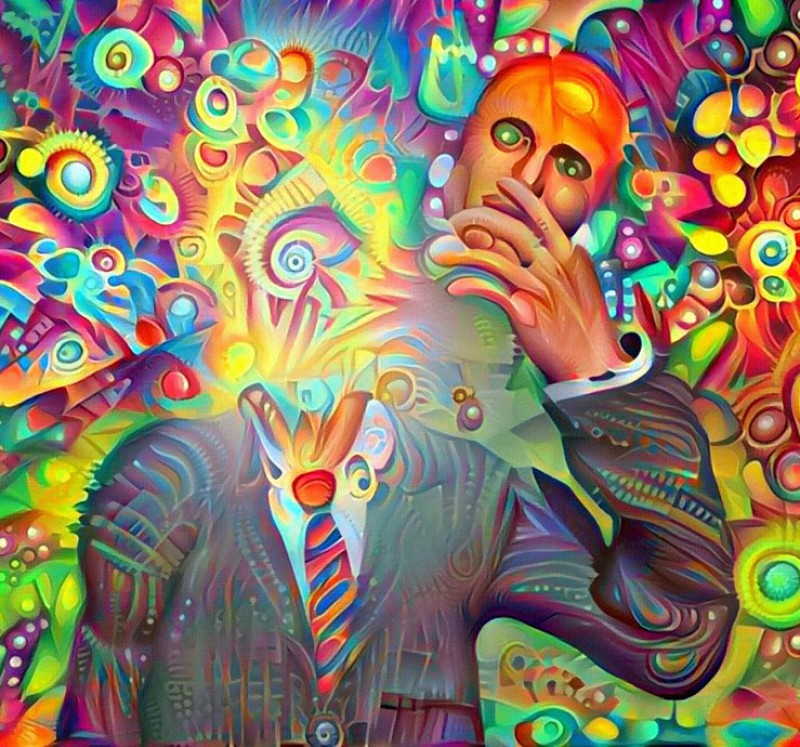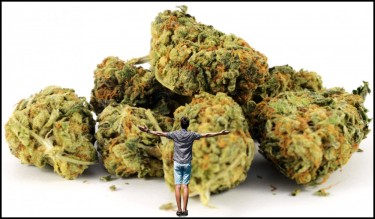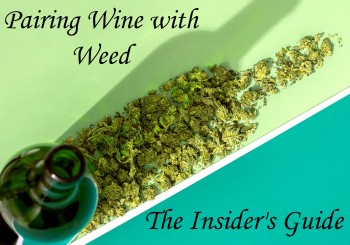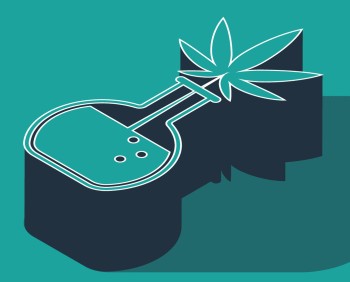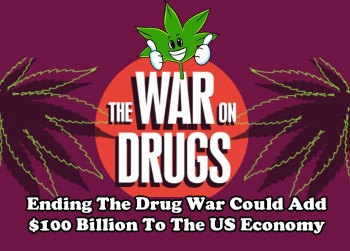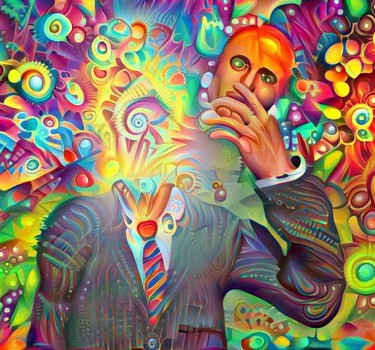
Adults still consuming cannabis and psychedelic at record highs according to the NIH
Since the world got flipped upside down by COVID-19, we've witnessed a fascinating shift in the landscape of psychoactive substance consumption. But here's the kicker – it's not the youngsters leading this charge into altered states of consciousness. No, my friends, it's the adults who are blazing this trail, and boy, are they blazing it hard.
According to recent studies by the National Institutes of Health, adults are indulging in cannabis and psychedelics at historic highs, leaving researchers scratching their heads and wondering, "What's the deal?" As someone who's spent the better part of two decades exploring the vast frontiers of consciousness through various herbal and fungal allies, I feel uniquely qualified to offer my two cents on this phenomenon.
Now, I'm not claiming to have all the answers. Hell, half the time I'm not even sure I know the right questions. But after years of personal experience and countless conversations with fellow psychonauts, I've developed some theories about why more adults are choosing to tune in and drop out in these turbulent times.
So, dear readers, I invite you to kick back, maybe roll up a little something if that's your jam (no judgment here), and join me as we dive deep into the reasons behind this psychedelic renaissance among the "grown-ups." We'll explore the data, ponder the implications, and maybe even have a few laughs along the way. After all, if there's one thing I've learned from my journeys, it's that sometimes the most profound insights come wrapped in a giggle.
Let's unravel this mystery together and see if we can't shed some light on why adults are entering the psychedelic realms in record numbers. It's going to be one hell of a trip.
What the NIH found
let's dive into the nitty-gritty of what the eggheads at the National Institutes of Health uncovered in their latest Monitoring the Future study. Buckle up, because these findings are about as mind-bending as a potent edible.
First off, let's talk numbers. The study, which has been tracking substance use since 1975, revealed that cannabis and hallucinogen use among adults remained at historic highs in 2023. We're not talking about a little bump here, folks. According to Dr. Nora D. Volkow, director of NIH's National Institute on Drug Abuse (NIDA), "We have seen that people at different stages of adulthood are trending toward use of drugs like cannabis and psychedelics and away from tobacco cigarettes." It's like we've collectively decided to trade in our cancer sticks for some consciousness expansion.
Let's break it down by age groups. Among adults aged 19 to 30, a whopping 42% reported cannabis use in the past year, with 29% lighting up in the past month, and 10% indulging daily. That's a lot of joints, folks. For the 35 to 50 crowd, the numbers were 29%, 19%, and 8% respectively. While these numbers didn't change much from 2022, they represent significant increases over the past five and ten years.
But here's where it gets really interesting. For the first time in the study's history, women in the 19-30 age group outpaced men in past-year cannabis use. That's right, ladies and gentlemen, the fairer sex is leading the charge into the green frontier. As a long-time observer of cannabis culture, I find this shift fascinating. Could it be that women are finally feeling more comfortable embracing Mary Jane publicly? Or perhaps they're just better at multitasking their highs with adulting?
Interestingly, this gender flip doesn't extend to the older crowd. Among the 35-50 year olds, men still reign supreme in cannabis consumption, maintaining a higher prevalence of past-year use than women. It seems the old boys' club is still alive and well in some circles.
Now, let's talk about the importance of this data. The Monitoring the Future study isn't just some random survey. It's been tracking substance use behaviors and attitudes since 1975, following a nationally representative sample from their teen years well into adulthood. This longitudinal approach gives us a unique window into how drug use patterns evolve over a lifetime.
As Megan Patrick, Ph.D., principal investigator of the study, puts it, "The power of surveys such as Monitoring the Future is to see the ebb and flow of various substance use trends over the longer term." In other words, this isn't just a snapshot; it's a full-length feature film of America's relationship with drugs.
What's particularly exciting is that the study is now reaching new milestones. In 2023, for the first time, a cohort from the study reached 65 years of age. Soon, we'll be able to track substance use trends among retirees. Imagine the potential headlines: "Seniors Swapping Bingo for Bongs?"
In all seriousness, this data is crucial for informing public health strategies and drug policies. As Dr. Volkow notes, these findings "underscore the urgent need for rigorous research on the potential risks and benefits of cannabis and hallucinogens – especially as new products continue to emerge."
Adults are getting higher than ever, women are breaking grass ceilings, and we're on the cusp of understanding drug use patterns across the entire lifespan. It's a brave new world out there, and I, for one, can't wait to see where this trip takes us next.
Why I believe people are turning to psychedelics
Now that we've waded through the scientific swamp, let's dive headfirst into the philosophical deep end. Buckle up, because we're about to get metaphysical.
These days, the world feels like it's been tossed into a cosmic blender set to "puree." We've got natural disasters popping up like whack-a-mole, wars erupting faster than you can say "geopolitical tension," and don't even get me started on the rollercoaster ride that is modern politics and finance. It's enough to make your average Joe's head spin faster than a Grateful Dead vinyl.
In this constant state of flux, we mere mortals find ourselves desperately trying to keep our footing. Humans, by nature, are creatures of habit. We love our routines. They're like warm, comfy blankets for our brains. But when the world around us starts shape-shifting like some cosmic Transformer, those cozy neural pathways can quickly become prison cells.
I call this phenomenon "neuro-lock." It's when our well-worn behavioral patterns become barriers, preventing us from adapting to the ever-changing landscape around us. We're like old dogs stubbornly refusing to learn new tricks, even as the ground beneath our paws turns to quicksand.
Enter psychedelics, stage left. These mind-bending substances are like WD-40 for our rusty neural gears. They induce a state of neuroplasticity, allowing us to break free from our habitual thought patterns and explore new mental territories. It's like trading in your trusty old bicycle for a flying carpet – suddenly, you're not bound by the roads anymore.
This newfound mental flexibility could explain why more people are turning to psychedelics to cope with our rapidly changing world. When reality starts feeling like a Salvador Dali painting, sometimes you need to dive into the surreal to make sense of it all.
But it's not just about adapting to change. There's a spiritual component to this psychedelic renaissance too. Over the past few decades, we've seen a steady decline in traditional religiosity. People are drifting away from organized religion, but that doesn't mean they've lost the yearning for transcendent experiences.
Psychedelics, while not a direct substitute for spirituality, certainly tap into that same cosmic vein. A strong dose of psilocybin can make you feel more connected to the universe than a lifetime of Sunday school. LSD might have you conversing with entities that make the burning bush look like a casual chat. And DMT? Well, let's just say it's not called the "spirit molecule" for nothing.
One thing's for certain: we're living in a brave new world. The old structures are crumbling, and something new is emerging from the rubble. Psychedelics could very well be the scaffolding we need to build this new reality. They're like training wheels for our collective consciousness as we learn to navigate this unfamiliar terrain.
Now, I'll be the first to admit that this is all speculation. I'm not claiming to have a hotline to the cosmic truth. But when you look at the global shifts happening around us and the skyrocketing rates of psychedelic use, it's hard not to see a connection.
We're in the midst of a neo-revolution, folks. The future is going to look wildly different from our past, and psychedelics might just be the bridge between the two. Will we emerge from this chrysalis as beautiful, enlightened butterflies? Or will we end up as cosmic roadkill on the highway of evolution? Your guess is as good as mine.
But one thing's for sure – it's going to be one hell of a trip. So grab your metaphysical seatbelts, because the journey's just beginning. And who knows? Maybe at the end of this long, strange trip, we'll find a world that's a little bit wiser, a little bit kinder, and a whole lot more interesting. Or maybe we'll just have really good stories to tell.
Either way, I'm here for it.
